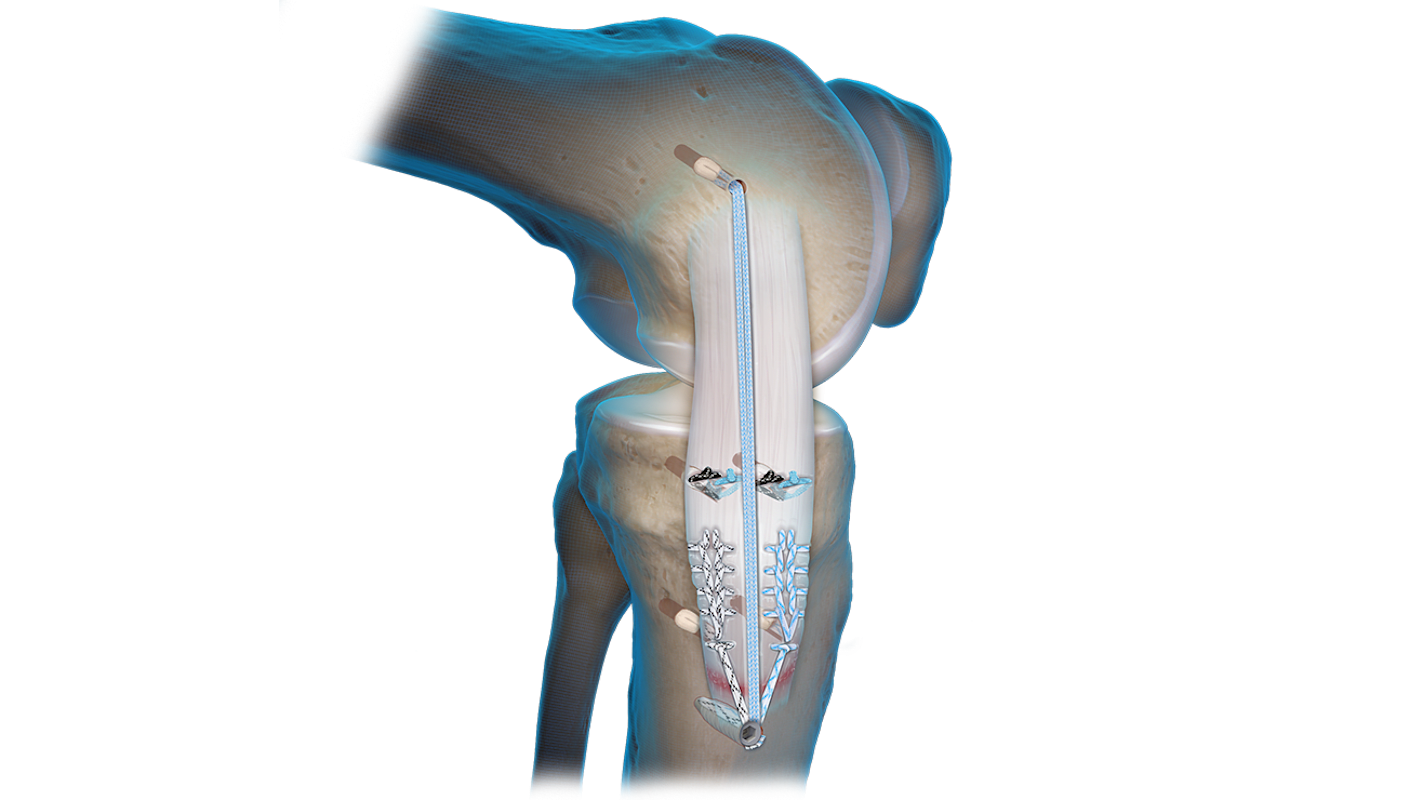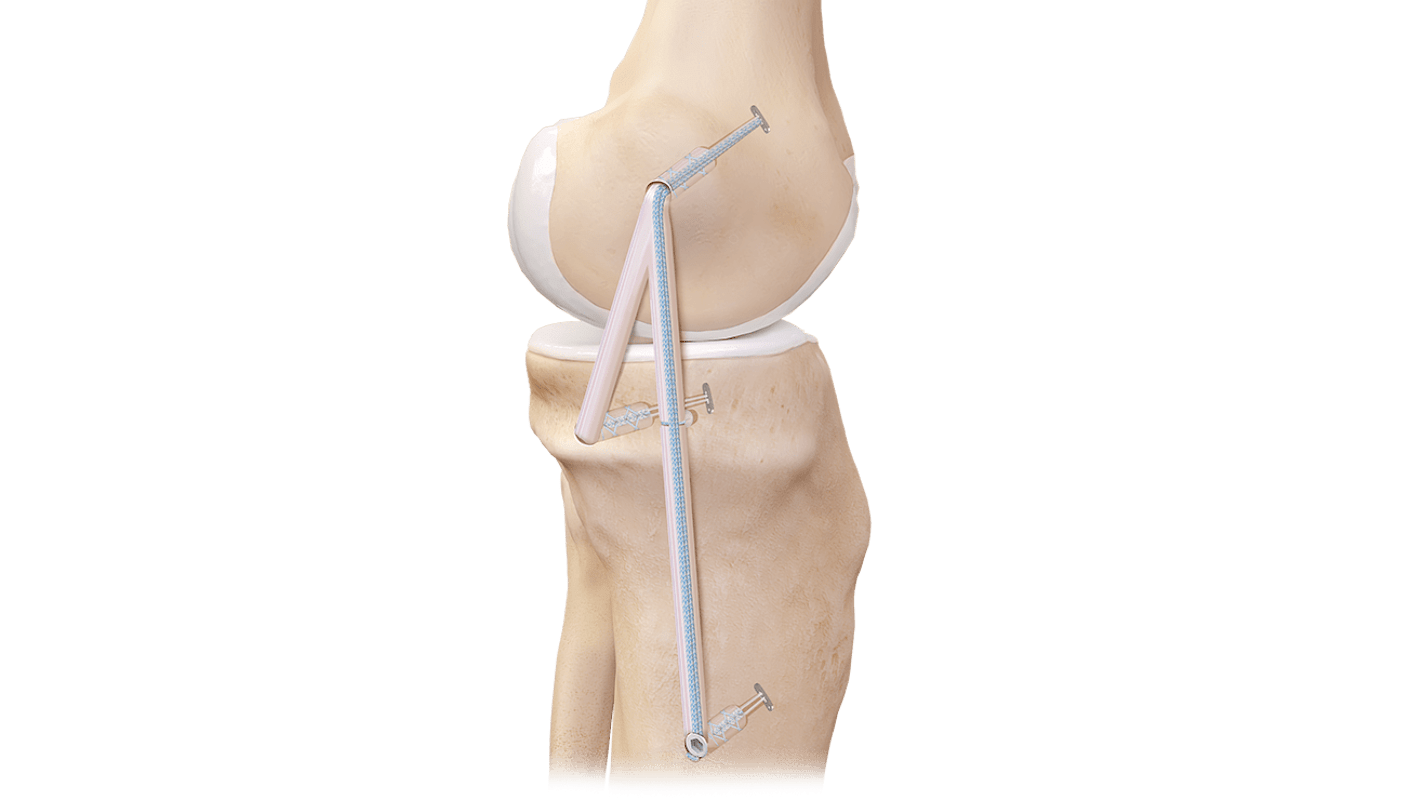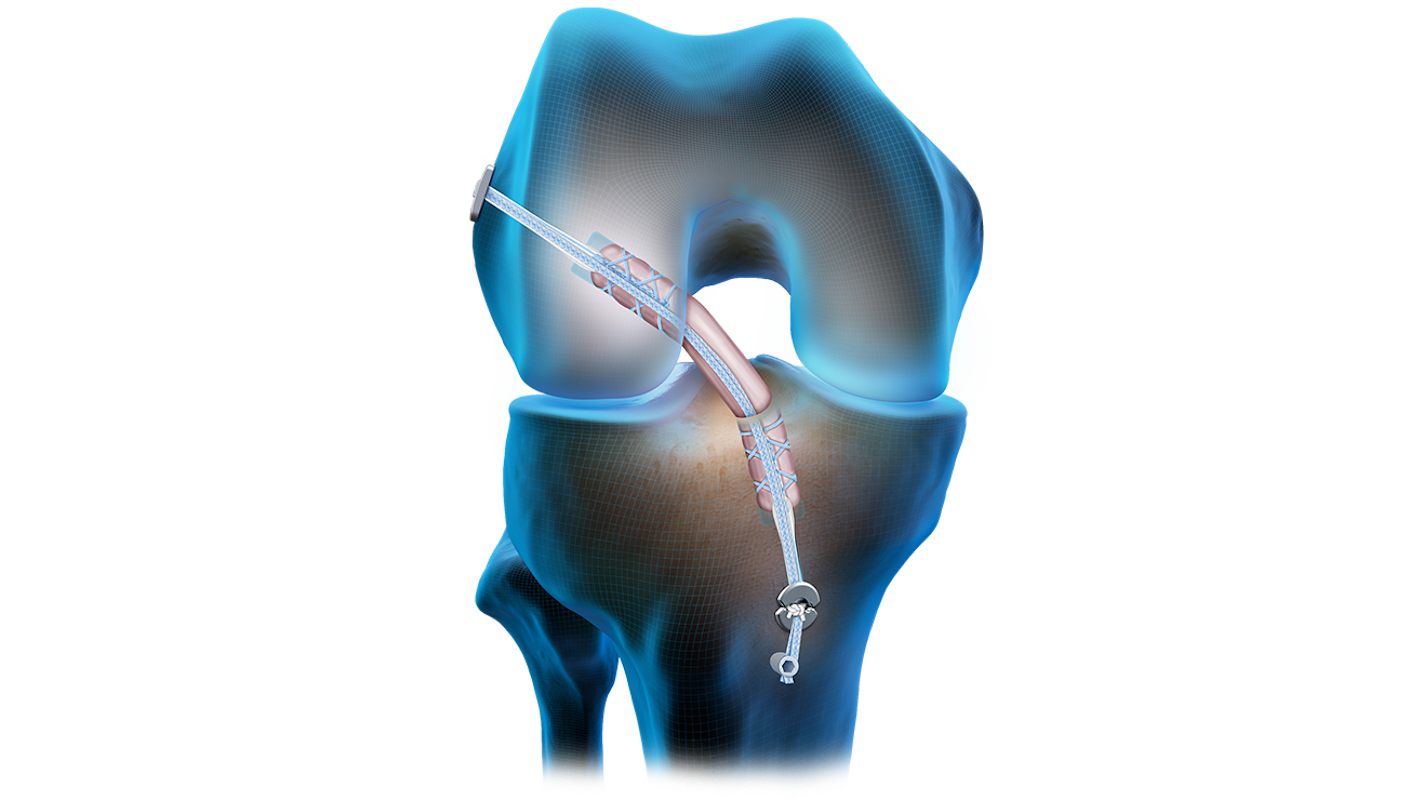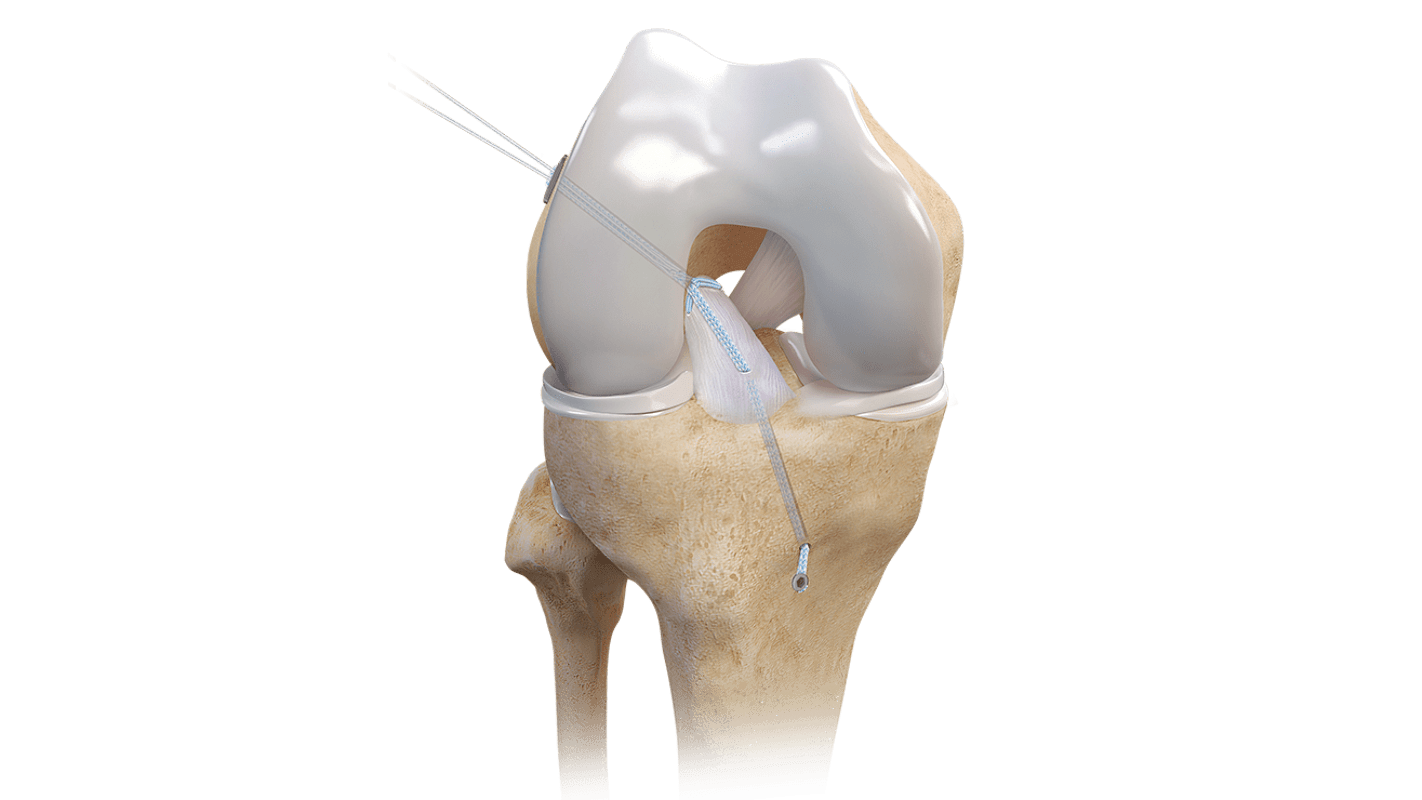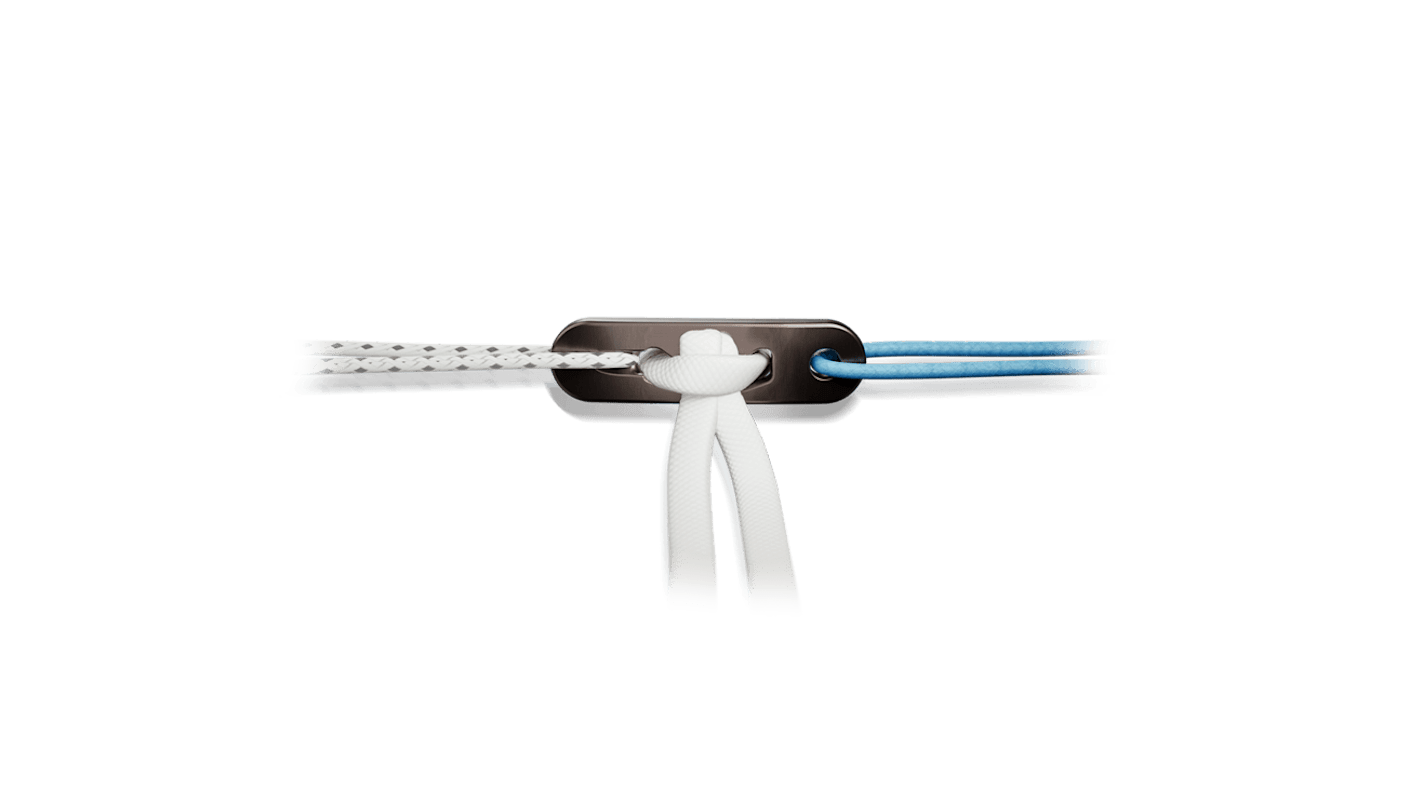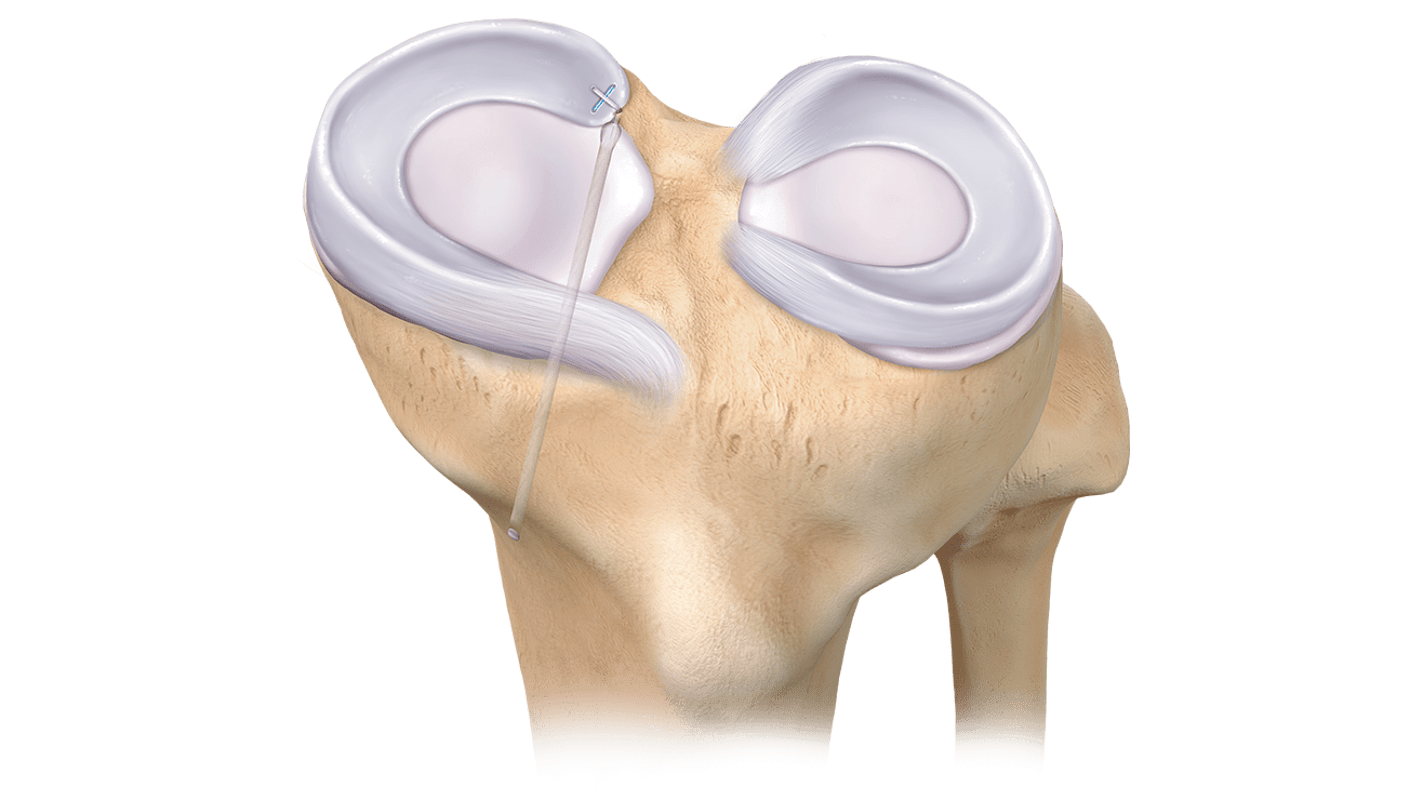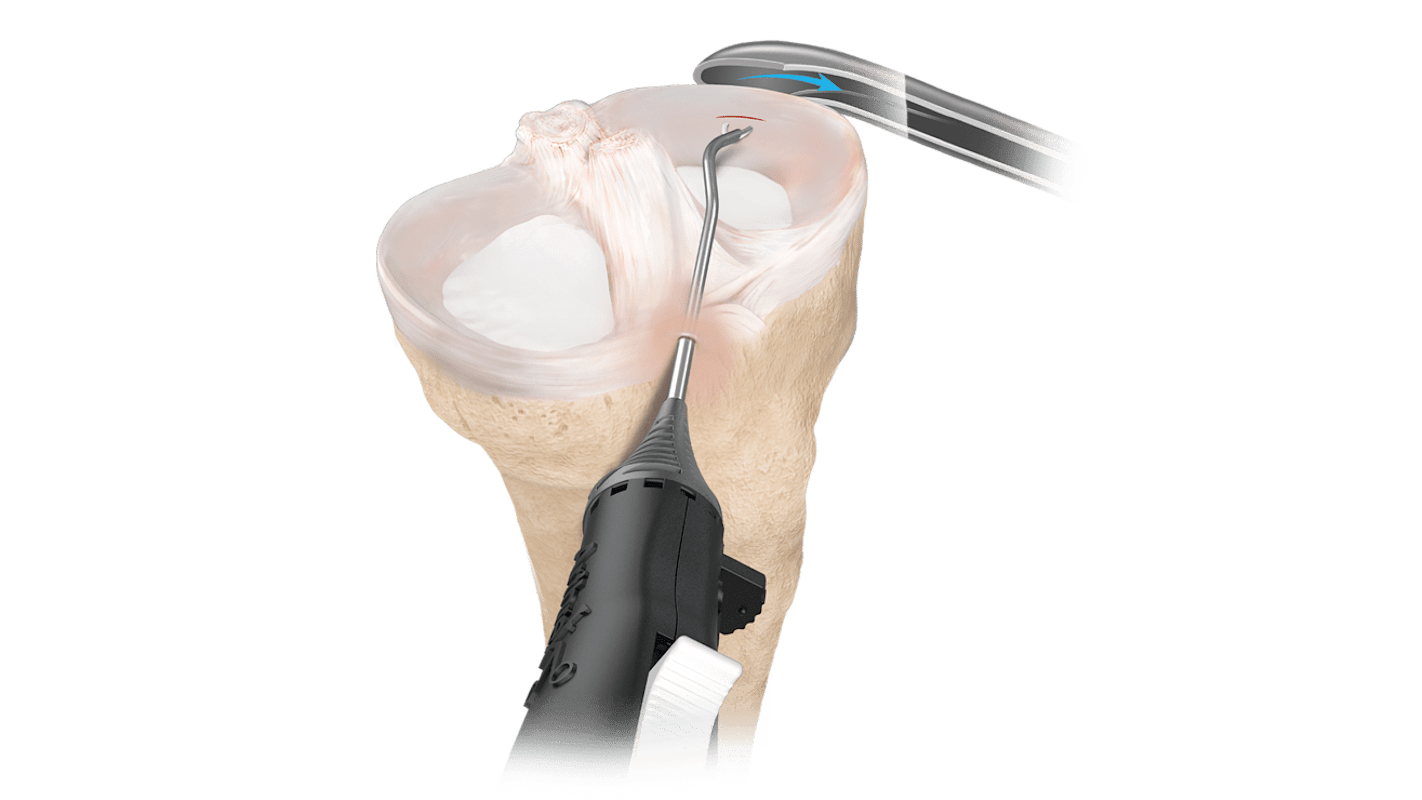Knee
Quad Tendon Autograft ACL Reconstruction
Quadriceps tendon grafts offer unique benefits for cruciate ligament reconstruction, such as a predictably large diameter, low morbidity,1 and a preferable stiffness profile for knee ligament reconstruction.
The QuadPro™ tendon harvester is designed to harvest a quadriceps or patellar tendon graft using a minimally invasive technique.2-4 The sharp tip cores out an approximate cylindrical graft. The harvester's ergonomically designed handle features graduations on the clear shaft to allow visualization of approximate graft length during harvesting. Available in four sizes (8 mm to 11 mm), the QuadPro tendon harvester can accommodate each patient’s unique needs as well as the surgeon’s preference for graft diameter.
The FiberTag® TightRope® implant facilitates attachment of single-ended grafts, such as quadriceps tendon grafts, to the ACL TightRope RT and ABS implants. FiberTag suture is integrated into the TightRope implant for a strong, consistent connection between the suture and TightRope loop. A simplified suturing technique, along with innovative packaging and the GraftClamp graft preparation instrument, make preparing quadriceps tendon grafts faster and more reproducible than ever.
References
1. Arthrex, Inc. LA1-00100-EN_K. Naples, FL; 2021.
2. Xerogeanes JW, Mitchell PM, Karasev PA, Kolesov IA, Romine SE. Anatomic and morphological evaluation of the quadriceps tendon using 3-dimensional magnetic resonance imaging reconstruction: applications for anterior cruciate ligament autograft choice and procurement. Am J Sports Med. 2013;41(10):2392-2399. doi:10.1177/0363546513496626
3. Hadjicostas PT, Soucacos PN, Berger I, Koleganova N, Paessler HH. Comparative analysis of the morphologic structure of quadriceps and patellar tendon: a descriptive laboratory study. Arthroscopy. 2007;23(7):744-750. doi:10.1016/j.arthro.2007.01.032
4. Krebs N, Yaish A, O’Neill N. Anatomic evaluation of the quadriceps tendon in cadaveric specimens: application for anterior cruciate ligament reconstruction graft choice. SMRJ. 2019;4(1):7961. doi:10.51894/001c.7961
Learn More